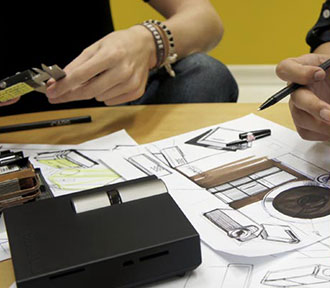The Devil Is In The Details: Product Design Matters!
 Everybody knows that there need to be differences between the products that AV pros specify into projects and the products retailers stock on their shelves.
Everybody knows that there need to be differences between the products that AV pros specify into projects and the products retailers stock on their shelves.
Obviously AV pros want to avoid products in their bill of materials that can be showroomed by customers who double check stuff on Amazon.com (in fact, you don’t want customers who are going to do that, but that’s another topic). More importantly, where products in the two channels differ most is in the attention paid to the little details, because those two channels have different requirements.
I know that I already started off with an aphorism in the title, but I’m going to lay down one more: Form follows function, and function matters more than anything.
Retail centers around a specific product customer desire: a 70-inch flat panel display, an AV receiver that has HDMI and 3D compatibility, etc. Any add-on selling is an effort to attach additional products or accessories to the invoice. Because of that, product focus tends to be on features rather than details. “Oh look, it’s got 3D!” or “It’s a 4K display! Incredible!”
Those are features, but they aren’t details. I’ll explain what I mean as I go on.
In the exact opposite of the way retailers do it, AV pros focus on selling a complete idea, like a “cinema room” or “whole house AV.” With AV pros, has more to do with adding rooms or functions to the overall design. That aside, for AV pros, beyond the sex appeal of this year’s CE Buzzword Bingo (4K! 3D!) the most important considerations for product selection center around details.
The most obvious of course is that the selected products work together and can actually, you know, be integrated. Less obvious are key product design details that, while of little-to-no-interest to retailers can be unspeakable headaches to AV Pros, whose reputations and profit margins are dependent upon delivering working solutions on time and on budget.
A good example of a key detail is HDMI. I’m not referring to the years of headaches integrators have encountered with making HDMI work in the field; we’ve come a long way in recent years. Rather, I’m referring to the fragility and ease of disconnection that HDMI cables suffer.
I’m sure most of you have accidentally damaged an HDMI port, or had to troubleshoot an installation where a half-unplugged cable was the culprit. Fortunately, there are solutions: Specify locking cables into your designs. I know that it’s not a part of the “official” HDMI standard, but make it part of your company’s official standard. Only use cables that solve that problem.
Most other examples require that you, you know, actually test equipment in your lab/showroom before putting it in someone’s house, which I know is a drum that I often beat. Sometimes you may have to put on your thinking cap and contemplate what the Worst Case Scenario for a product failure might be. Get creative, and think about your prior experiences.
Once, years ago, I was testing a new HDMI extender. When it didn’t work the way it was supposed to, vendor support suggested changing the DIP settings. The unit’s DIP switches were on the underside of the box, and covered with foil tape. For some reason, the factory settings for the switches were NOT the recommended positions, and they had to be manually changed. If you didn’t know that, you would have already bolted the unit into a rack and stitched in its power and HDMI cables, only to find it didn’t work, and now have to uninstall it to change the DIP switches. Imagine you annoyed you’d be.
My favorite example of a poor design detail was an in-ceiling TV lift whose power module had failed. The fact that the module was, well, modular was good: that meant it could be replaced. What wasn’t good was that the only way to replace the module was to remove the TV from the bracket, and have an installer who was skinny, with long arms and (ideally) left-handed to crawl up inot the enclosure with a socket wrench to remove the defective module and install the new one.
Fortunately we had just such an installer, but there was still much straining and cursing coming from inside the lift enclosure. Granted, that was a scenario you’re unlikely to envision ever encountering, but trust me, that one experience will color how you look at motorized lifts for the rest of your life.
Image via Asus





